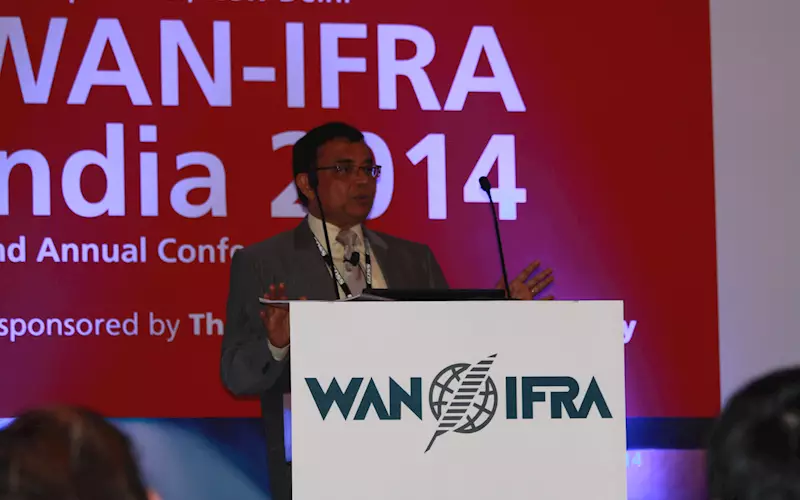Benchmarking to improve operations efficiency
Newspapers in India are doing well. But, are Indian newspaper publishers doing enough? Are they following the best practices? Is there even a best practice in the Indian newspaper industry?
24 Sep 2014 | By Dibyajyoti Sarma
These and other insightful questions were answered in the topic, ‘operation efficiency benchmarking for the newspaper industry in India’, presented by D D Purkayastha, managing director, ABP Ltd, during the closing session of Wan-Ifra India 2014 conference held in New Delhi on 18 September, 2014.
Purkayastha had another important question to ask. Are the publishers prepared internally to fight of ‘gorilla’ in the shape of TV and digital mediums? To find the answers, Purkayastha, under the aegis of Wan-Ifra, spearheaded a benchmarking exercise, with simple, easy to use parameters, and he said, the results were pleasantly surprising.
There were two objectives to this benchmarking exercise – identify improvement areas for participating organisations across the entire business system and help improve operations efficiency of the industry as a whole. Five newspaper houses from India, with English, Hindi and regional publications, participated in the exercise by providing data of their various business processes. To be fair, the names of the publications were kept anonymous.
In the process, 12 metrics, in five major heads, including ad sales, circulation sales, manufacturing, finance, and editorial, were benchmarked across the business system.
According to Purkayastha, there are some caveats to this exercise. To being with, this will not provide a black and white answer; rather it would be a good pointer in the right direction for improvement opportunities. Again, the analysis was done based on the data provided by the respective participants.
Here are some other interesting facts. The participant companies represent over 11 million daily circulations and 50 million daily readerships. If all players below average were to improve to current average level, the group of five participants alone will gain up to Rs 600 crore as net bottomline impact. To put this into perspective, one of the largest of the five participants has a PBT of about Rs 240 crore.
What was the result of the benchmarking? Perhaps predictably, not a single publication among the five seemed to be doing well in all aspects. While one participant was below average in ad sales volume and circulation productivity, it was above average in unsolds, production staff productivity and newsprint wastage. Another participant was above average in ad sales volume, ad sales value, circulation productivity, unsolds, production staff productivity and newsprint wastage, but were below average in direct cost, indirect cost, inventory turnover and total cost per million BS. In one case, a participant was below average in all categories except direct cost.
In Purkayastha’s presentation, the above average box was marked green and below average box was marked red. When all the categories are marked green, we will achieve a perfect benchmarking, Purkayastha concluded.











 See All
See All